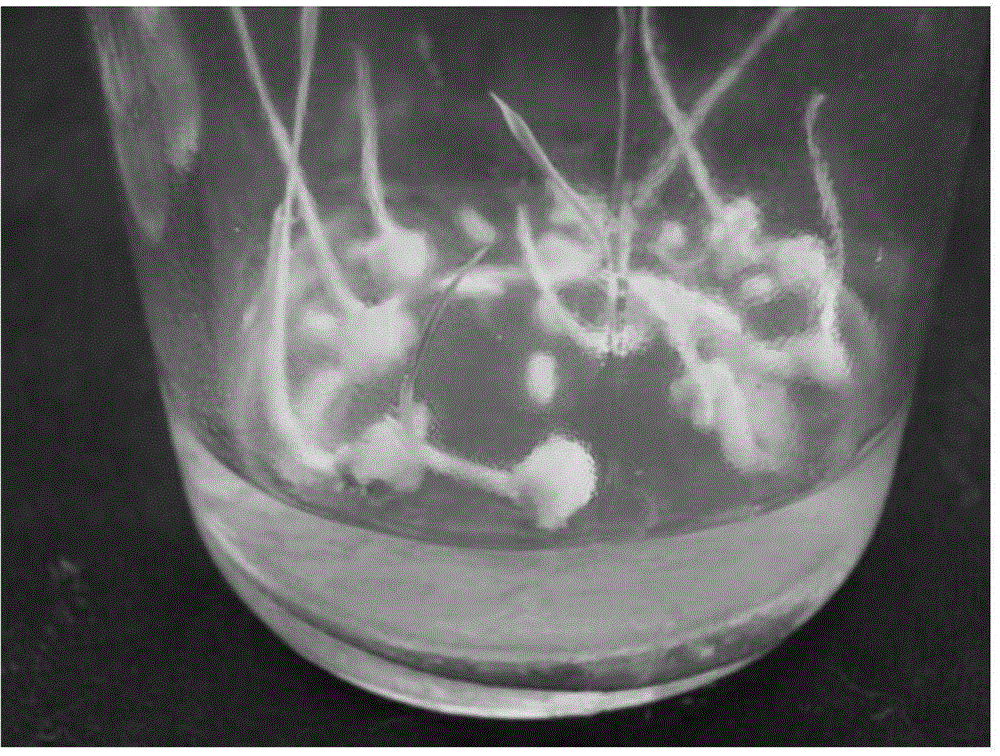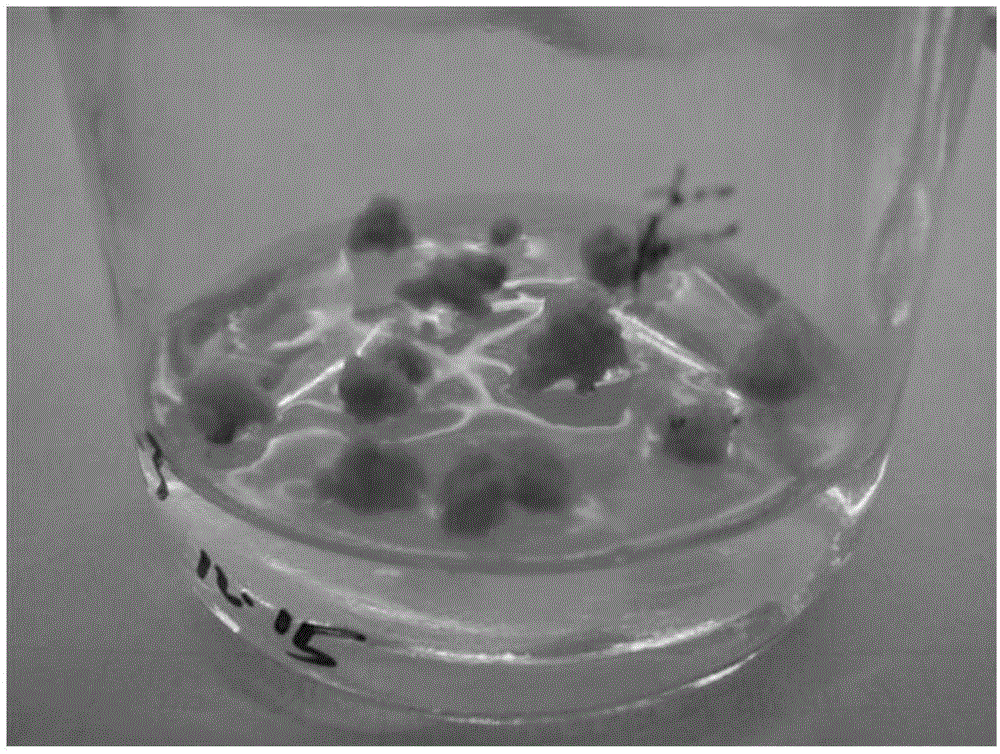Method for high efficiency regeneration and genetic transformation of indica rice
A high-efficiency regeneration and genetic transformation technology, applied in biochemical equipment and methods, plant regeneration, horticultural methods, etc., can solve the problems of lack of high-efficiency regeneration system and genetic transformation method of indica rice, failure of successful transformation, low transformation efficiency, etc. Good bacterial effect, good practicability and high efficiency, and the effect of short transformation period
- Summary
- Abstract
- Description
- Claims
- Application Information
AI Technical Summary
Problems solved by technology
Method used
Image
Examples
Embodiment 1
[0057] 1. Callus induction:
[0058] Mature embryos of indica rice variety M5274 were used as explants, soaked in 75% alcohol by volume for 1 min, then soaked in 0.1% mercuric chloride for 12 min, washed 5 times with sterile water, and finally the sterilized explanted The body was inserted into the induction medium, and cultured in the dark at 33°C for 25 days to induce callus.
[0059] 2. Subgeneration of callus:
[0060] From the above-mentioned obtained calli, select vigorously growing pale yellow granular calli and transfer them to the subculture medium, place them under dark culture conditions at 33° C., and subculture for 12 days.
[0061] 3. Preculture of callus:
[0062] Vigorously growing pale yellow callus pieces with a particle diameter of 2-3 mm were inoculated on the pre-culture medium, and cultured in the dark at 33°C for 4 days.
[0063] 4. Agrobacterium-mediated transformation of embryogenic callus:
[0064] The strain used was Agrobacterium tumefaciens...
Embodiment 2
[0075] 1. Callus induction:
[0076] The young embryos of indica rice variety E09-2076 were used as explants, soaked in 75% alcohol by volume for 1 min, then soaked in 0.1% mercuric chloride by mass for 10 min, washed 4 times with sterile water, and finally the sterilized The explants were inserted into the induction medium and cultured in the dark at 33°C for 22 days to induce callus.
[0077] 2. Subgeneration of callus:
[0078] From the callus obtained above, the vigorously growing light yellow granular callus was selected and transferred to the subculture medium, placed in the dark culture condition of 33°C, and subcultured for 14 days.
[0079] 3. Preculture of callus:
[0080] Vigorously growing light yellow callus pieces with a particle diameter of 2-3 mm were inoculated on the pre-culture medium, and cultured in the dark at 33° C. for 5 days.
[0081] 4. Agrobacterium-mediated transformation of embryogenic callus:
[0082] The strain used was Agrobacterium tume...
PUM
 Login to View More
Login to View More Abstract
Description
Claims
Application Information
 Login to View More
Login to View More - R&D
- Intellectual Property
- Life Sciences
- Materials
- Tech Scout
- Unparalleled Data Quality
- Higher Quality Content
- 60% Fewer Hallucinations
Browse by: Latest US Patents, China's latest patents, Technical Efficacy Thesaurus, Application Domain, Technology Topic, Popular Technical Reports.
© 2025 PatSnap. All rights reserved.Legal|Privacy policy|Modern Slavery Act Transparency Statement|Sitemap|About US| Contact US: help@patsnap.com



